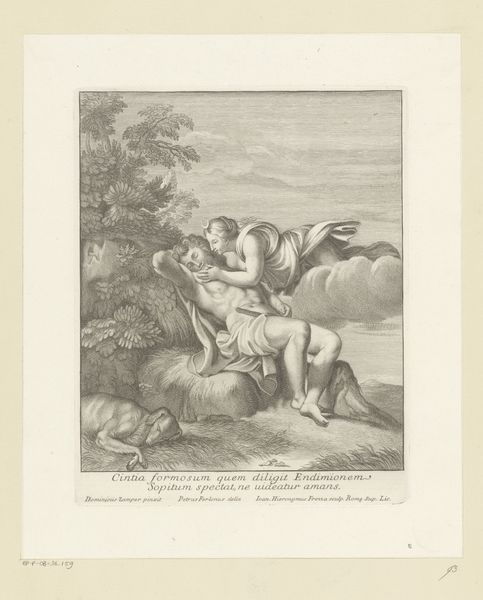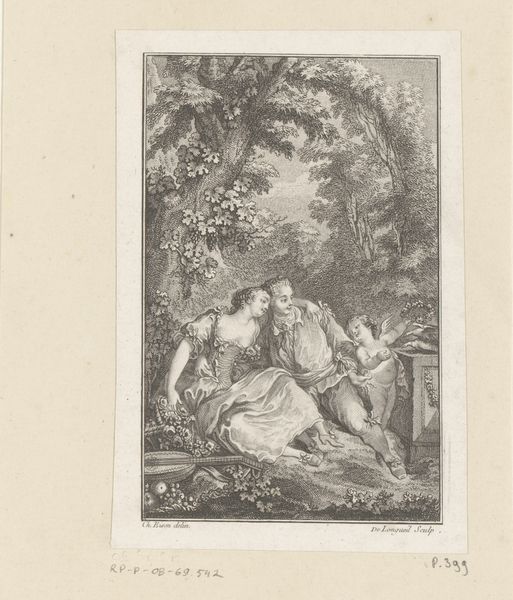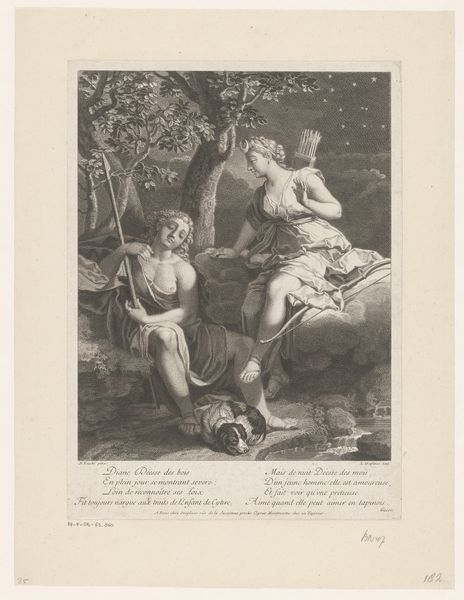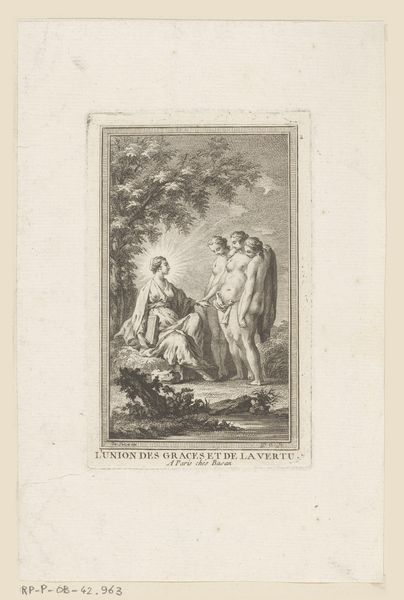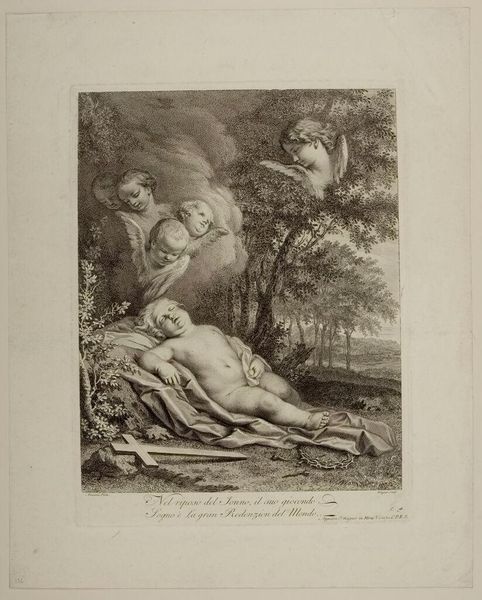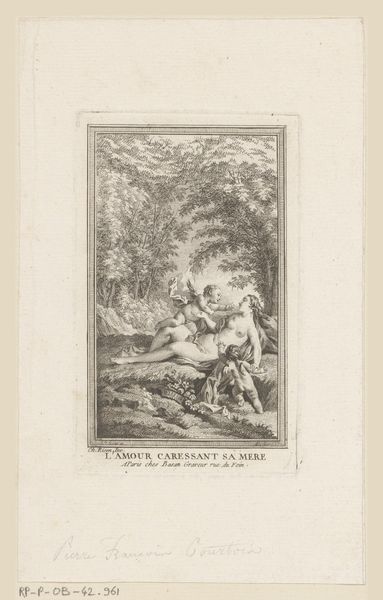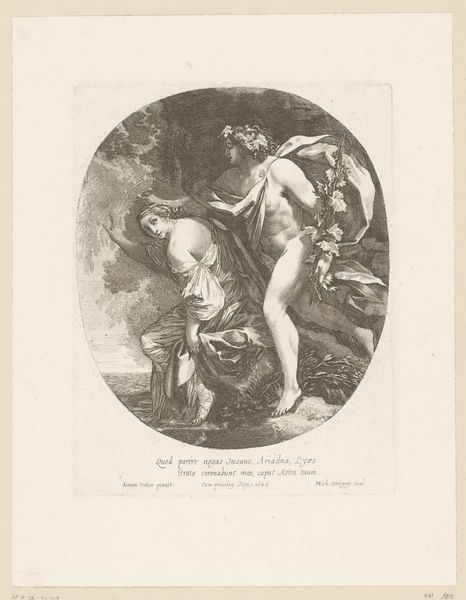
print, engraving
#
allegory
# print
#
landscape
#
figuration
#
history-painting
#
nude
#
engraving
#
rococo
Dimensions: height 277 mm, width 200 mm
Copyright: Rijks Museum: Open Domain
This engraving, "Venus et les Graces au Bain," was created by Jean Daullé in the 18th century. Its delicate lines form a scene of classical grace, a tranquil yet erotically charged moment of Venus and her attendants at their bath. The composition is structured around a central pyramid of figures, balanced by the surrounding landscape. The use of line is critical here; it models form while also creating a sense of depth and texture, from the soft skin of the figures to the dense foliage in the background. Daullé employs a semiotic system that draws from classical mythology and rococo aesthetics. The bathing scene is not merely a depiction of beauty but also a signifier of luxury, leisure, and idealized femininity. The arrangement of figures—their poses and interactions—may challenge fixed meanings. It destabilizes established categories of public and private, innocence and sensuality. It prompts us to reflect on how such depictions reinforce or subvert cultural values. Ultimately, it functions as part of a larger cultural discourse on beauty, nature, and the human form.
Comments
No comments
Be the first to comment and join the conversation on the ultimate creative platform.
